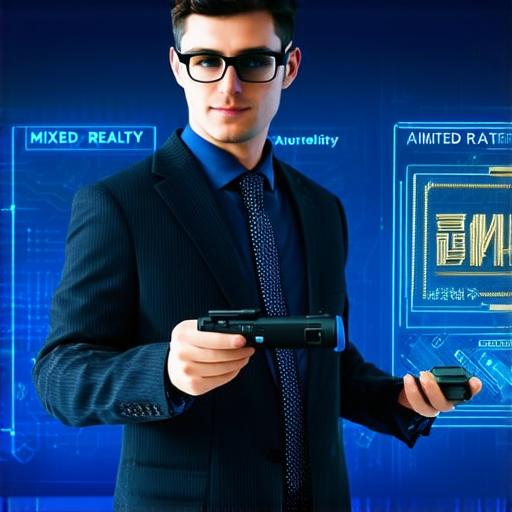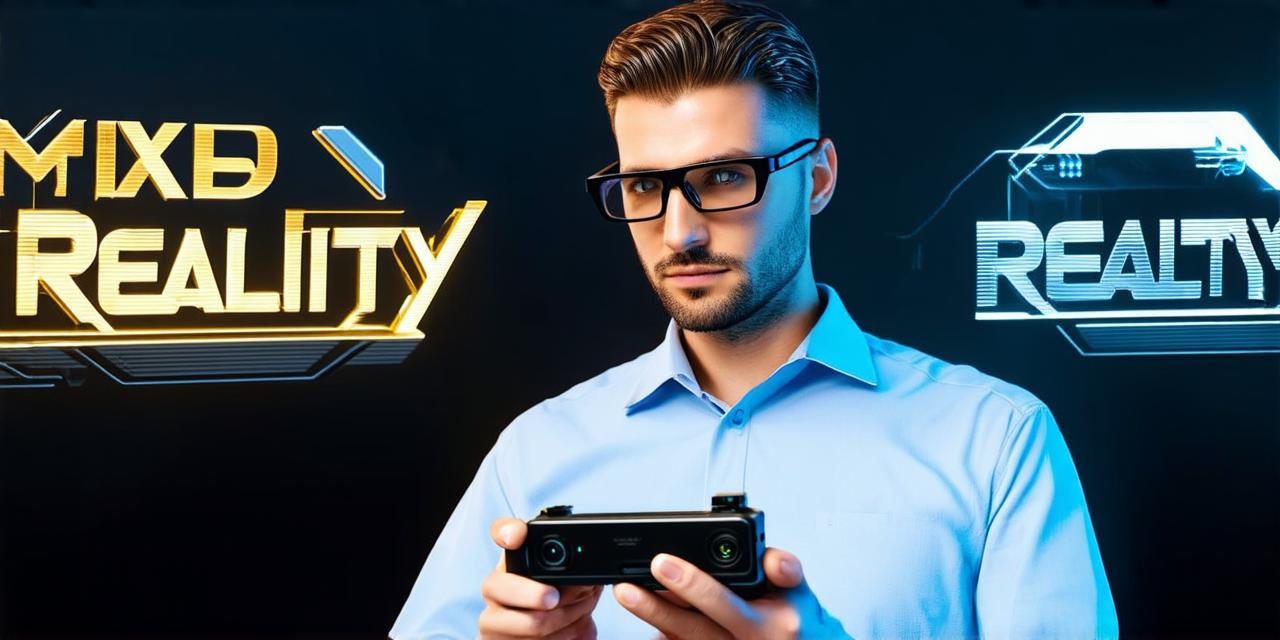<!DOCTYPE html>

What is Mixed Reality?
Mixed reality (MR) is a type of virtual reality that combines elements of both real-world and virtual environments. It allows users to interact with both physical and digital objects in the same space, creating an immersive experience that blurs the line between reality and illusion. MR can be experienced through headsets or displays, and it often involves the use of motion tracking devices to track the user’s movements in real-time.
Mixed Reality vs Augmented Reality
While both VR and AR technologies have their own unique strengths, they differ in terms of how they interact with the real world. Augmented reality, on the other hand, overlays digital information onto the real world, enhancing the user’s perception of their surroundings without completely replacing it. In contrast, mixed reality is a hybrid experience that combines elements of both VR and AR, allowing users to interact with both real-world and virtual objects in the same space.
Applications of Mixed Reality vs Augmented Reality
Mixed reality has several potential applications in fields such as gaming, entertainment, education, and healthcare. For example, mixed reality could be used to create immersive educational experiences where students can interact with virtual objects in a real-world classroom. In healthcare, MR could be used for surgical planning and training, allowing doctors to practice complex procedures in a safe and controlled environment.
Augmented reality, on the other hand, has numerous practical applications in areas such as manufacturing, retail, and marketing. For example, AR can be used to enhance the customer experience by providing real-time information about products or services. It can also be used in manufacturing to improve assembly line efficiency and reduce errors.
Real-Life Examples of Mixed Reality vs Augmented Reality
One real-life example of mixed reality is the game “Beats Saber” by Beat Games. In this game, players use VR headsets to experience a virtual world where they must use virtual light sabers to slash through blocks that represent beats in music. The game combines elements of both VR and AR by allowing players to interact with the virtual environment while still being able to see their real-world surroundings.
Another example of augmented reality is the popular shopping app “Ikea Place”. This app allows users to visualize how furniture would look in their home before making a purchase. By using AR, users can see the true size and scale of the furniture without having to physically place it in their home.
Expert Opinions on Mixed Reality vs Augmented Reality
“Mixed reality has the potential to transform industries such as gaming, entertainment, and education,” says Dr. Richard Devine, a professor of computer science at Trinity College Dublin. “By blending virtual and real-world environments, MR can create immersive experiences that were previously impossible.”
According to Dr. Devine, the key challenge for MR is developing more advanced motion tracking technology that can accurately track the user’s movements in real-time. “Without precise motion tracking, MR experiences can be disjointed and uncomfortable,” he says.
Augmented reality expert Dr. Yann Collet, on the other hand, believes that AR has already shown significant potential in areas such as manufacturing, retail, and marketing. “AR has the ability to improve efficiency and accuracy in manufacturing processes, while also providing a more engaging shopping experience for consumers,” he says.
FAQs
What is the difference between virtual reality (VR) and augmented reality (AR)?
Virtual reality creates a completely immersive environment that replaces the user’s real-world surroundings with digital objects, while augmented reality overlays digital information onto the real world.
Can mixed reality be experienced through a smartphone or tablet?
Yes, mixed reality can be experienced through smartphones and tablets using AR apps. However, for more advanced MR experiences, a VR headset may be required.
What are some practical applications of augmented reality in the real world?
Augmented reality has numerous practical applications in areas such as manufacturing, retail, and marketing. For example, AR can be used to improve assembly line efficiency and reduce errors in manufacturing, while also providing a more engaging shopping experience for consumers.
What is the key challenge for mixed reality?
The key challenge for MR is developing more advanced motion tracking technology that can accurately track the user’s movements in real-time. Without precise motion tracking, MR experiences can be disjointed and uncomfortable.



